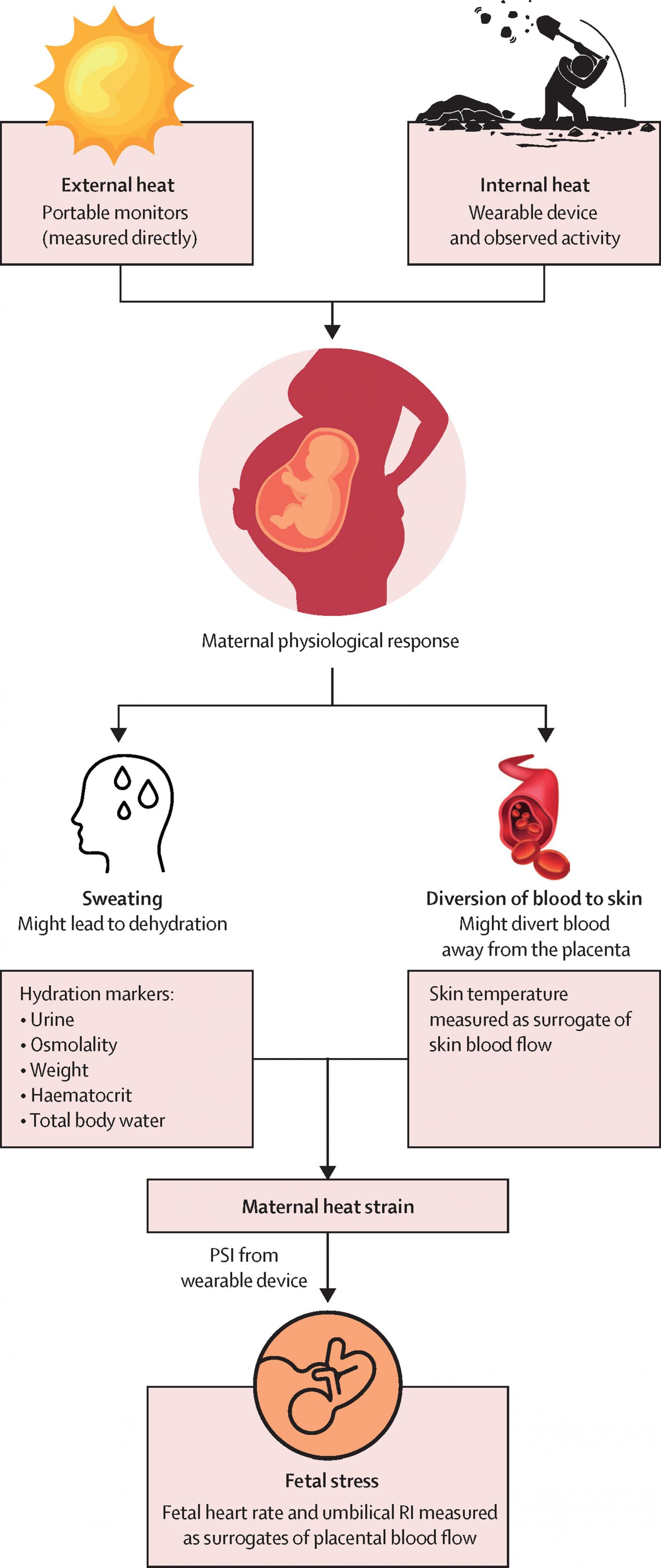
Anthropogenic climate change has caused extreme temperatures worldwide, with data showing that sub-Saharan Africa is especially vulnerable to these changes. In sub-Saharan Africa, women comprise 50% of the agricultural workforce, often working throughout pregnancy despite heat exposure increasing the risk of adverse birth outcomes. In this study, we aimed to improve understanding of the pathophysiological mechanisms responsible for the adverse health outcomes resulting from environmental heat stress in pregnant subsistence farmers. We also aimed to provide data to establish whether environmental heat stress also has physiological effects on the fetus.
We conducted an observational cohort study in West Kiang, The Gambia, at the field station for the Medical Research Council Unit The Gambia at London School of Hygiene & Tropical Medicine (named the MRC Keneba field station). Pregnant women who were aged 16 years or older and who were at <36 weeks’ gestation of any gravida or parity were invited to participate in the study. Participants were eligible if they were involved in agricultural or related manual daily tasks of living. Participants were ineligible if they refused to provide consent, had multiple pregnancies (eg, if they had twins), were acutely unwell, or were diagnosed with pre-eclampsia or eclampsia. Heat stress was measured by wet bulb globe temperature (WBGT) and by using the universal thermal climate index (UTCI), and maternal heat strain was directly measured by modified physiological strain index calculated from heart rate and skin temperature. Outcome measures of fetal heart rate (FHR) and fetal strain (defined as a FHR >160 beats per min [bpm] or <115 bpm, or increase in umbilical artery resistance index) were measured at rest and during the working period. Multivariable repeated measure models (linear regression for FHR, and logistic regression for fetal strain) were used to evaluate the association of heat stress and heat strain with acute fetal strain.
Between Aug 26, 2019, and March 27, 2020, 92 eligible participants were recruited to the study. Extreme heat exposure was frequent, with average exposures of WBGT of 27·2°C (SD 3·6°C) and UTCI equivalent temperature of 34·0°C (SD 3·7°C). The total effect of UTCI on fetal strain resulted in an odds ratio (OR) of 1·17 (95% CI 1·09–1·29; p<0·0001), with an adjusted direct effect of OR of 1·12 (1·03–1·21; p=0·010) with each 1°C increase in UTCI. The adjusted OR of maternal heat strain on fetal strain was 1·20 (1·01–1·43; p=0·038), using the UTCI model, with each unit increase.
Data from our study show that decreasing maternal exposure to heat stress and heat strain is likely to reduce fetal strain, with the potential to reduce adverse birth outcomes. Further work that explores the association between heat stress and pregnancy outcomes in a variety of settings and populations is urgently needed to develop effective interventions.
